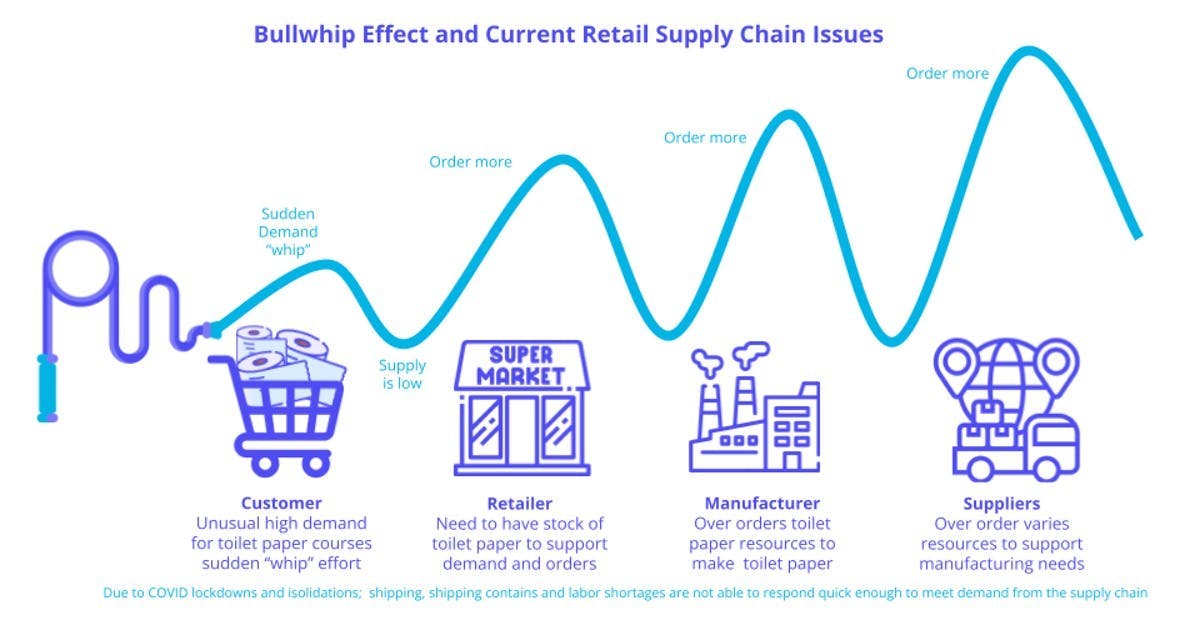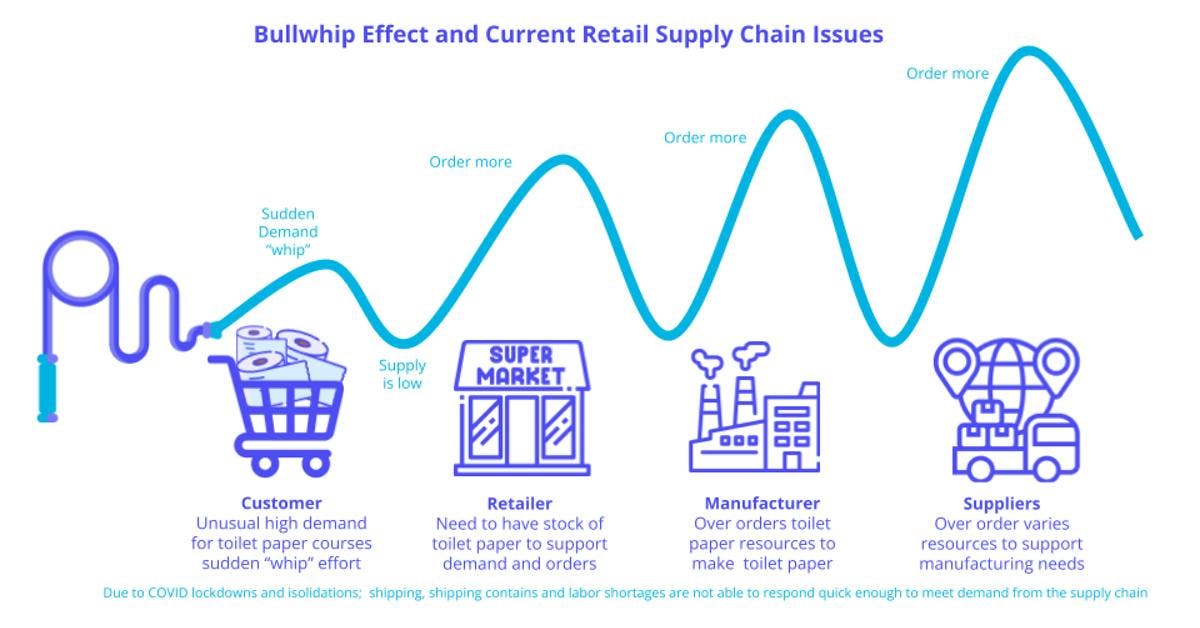
The bullwhip effect distorts demand signals and makes forecasting nearly impossible. Here is how AI can help.
In the wake of the pandemic and unprecedented shopping behavior, retailers are scrambling to minimize empty shelves. Panic buying decimated inventories, while the pandemic has disrupted the supply chain at every step. How can we forecast the “new normal” if we can’t measure it yet?
Problem 1: The Bullwhip Effect
What is the bullwhip effect, you ask? It's a phenomenon that describes the demand distortion that travels upstream through the supply chain from the retailer to the manufacturer due to the variance of orders which may be larger than that of sales. It begins when customers engage in unpredictable shopping habits. Retailers react by saturating the errant demand through larger orders. These larger orders increase stress on distributors, who often react the same way: increasing order size. This leaves the manufacturer scrambling in an attempt to manage production and accommodate the magnified orders.
Problem 2: Old data doesn’t work
Retailers have used demand signals and historical data to inform their orders in the past, but recent world events have created mass distortions in demand forecasts. Retailers have maintained their traditional forecasting, growing their orders by magnitudes. Since buying behavior signals are no longer accurate, forecasting demand is next to impossible. Many large retailers are still operating in a reactive mode, so inflating orders has become systemic, causing the Bullwhip effect.
So how do you insulate yourself and your business from these adverse effects?
You need a new paradigm in demand signal forecasting to assess the situation accurately.

Solution: AI Tools Make the Impossible Possible Through Retail Scenario Simulation
AI and machine learning models can simulate different demand signals and their impacts. With these powerful tools and simulations, you can plan for unexpected scenarios and accommodate the “new normal.”
AI can simulate changes to the retail shelf, so you can answer questions like....what would happen if:
- There was a sudden increase in movement of a certain item (perhaps caused by a viral TikTok recipe)?
- We delete or reduce certain SKUs due to production constraints and/or portfolio pruning?
- We increase shelf holding power to accommodate post-pandemic high volumes (I’ve heard from clients that the average Days of Supply for some categories are down to half of what they were in 2019)?
- We relaxed Points of Distribution churn limits to allow for more customized assortments and improve category growth?
HIVERY Curate is designed to give you the best plan of action to achieve your goals based on your real-world and hypothetical constraints, it’s both predictive and prescriptive.
HIVERY machine learning tools are trained with years of data and deliver plans of action modelled with demand signal datasets. The best part? Our tools are easy to use. Pose a question, and the AI will simulate constraints and outcomes and deliver a goal-oriented solution in minutes. Want to increase supply but limit churn? Hivery’s tool has a plan for that.
Just watch this video:
You don’t have to do assortment, space, or forecasting the old way. AI considers the old data, new data, and accounts for unpredictable markets to help you achieve the best outcomes for your business (and your customer’s business).
Accurate, Effective Solutions
At HIVERY, we believe Data has a better idea™, and our data-driven solutions can help protect you from the bullwhip effect. Contact me today to explore if we can help you and/or see a live demo.